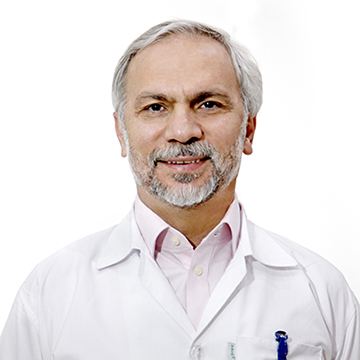Face Lifting
Facelift, also known as rhytidectomy, is a cosmetic surgical procedure aimed at improving the appearance of the face and neck skin. This comprehensive method involves the removal of excess skin, fat, and muscles from the face, neck, and jaw to achieve a more youthful and rejuvenated look. The aging process, along with various environmental factors, lifestyle choices, and genetic predisposition, can lead to sagging and drooping of facial skin. These factors can even cause premature facial skin sagging in some individuals.
Before performing a facelift, a skilled surgeon will conduct a thorough evaluation of the patient's medical history, skin elasticity, texture, thickness, and bone structure. Additionally, the surgeon will engage in a detailed discussion with the patient to understand their expectations and desired outcomes. This assessment allows the surgeon to recommend a suitable approach or combination of methods to achieve the desired results. Local or general anesthesia, along with sedatives, is used during a facelift procedure.
The facelift procedure involves pulling back the sagging skin on each side of the face and surgically altering the tissues beneath the skin to restore a more youthful appearance. The excess skin and tissue are removed before the incisions are closed with stitches. The specific type of incision and technique employed depend on the patient's needs and the chosen approach, but most incisions typically start from the temples and hairline, extend down around the earlobe, and end behind the ear and lower part of the scalp. In some cases, an incision may also be made under the chin.
Facelifts are often combined with other cosmetic procedures such as forehead lifts, eyebrow lifts, blepharoplasty (eyelid lift), neck lifts, or rhinoplasty (nose surgery) to achieve more comprehensive and harmonious results. The effects of facelift surgery can be long-lasting and can significantly enhance a patient's appearance, self-confidence, and overall well-being.
Candidates for facelift surgery are individuals who have experienced signs of aging on their face or suffer from wrinkles and sagging around the eyes. Conditions that can be corrected with a facelift include sagging cheeks, excess skin in the jaw area, deep wrinkles around the nose and lips, and hanging skin and excess fat in the neck. However, it's essential to note that facelift surgery is not suitable for superficial wrinkles, sun damage, fine lines around the nose and lips, or changes in skin color.
Facelift surgery involves pulling up and tightening sagging skin tissues to restore a more youthful appearance naturally. As individuals age, their skin loses elasticity, and facial tissues experience volume loss, leading to sagging skin around the jaw, deep wrinkles, and loose neck skin. Facelift surgery can effectively address these signs of aging, providing relief to patients who are bothered by them. Suitable candidates for facelift surgery are those who experience discomfort and embarrassment due to sagging skin on their face and neck, those who wear clothing to hide wrinkles, and those who feel that their aging face negatively impacts their personal and professional life.
There are two main types of facelift surgery: mini facelift and standard facelift. A mini facelift is a less invasive technique suitable for patients with mild sagging of the skin around the face and jaws. It involves shorter incisions made along the hairline above the ears and/or in the natural folds around the ears. This technique allows the cosmetic surgeon to tighten deeper skin tissues, correct sagging skin around the jaw, improve the jaw angle, and rejuvenate the appearance of the face. A standard or "traditional" facelift, on the other hand, is a more extensive procedure suitable for moderate to advanced cases of facial aging. This surgery requires longer incisions that start from behind the hairline of the temple and continue in front of the ear, allowing the surgeon to move deeper tissues under the skin, remove excess skin, and correct sagging skin around the jaw and neck.
The exact technique used in facelift surgery depends on various factors, including the patient's treatment goals, anatomy, the extent of the facelift, and whether other procedures are performed simultaneously. Facelifts are typically performed using general anesthesia, but local anesthesia with sedation may be used in some limited cases. After making the initial incisions, the surgeon separates the skin from the connective tissue and underlying muscles. This allows the surgeon to manipulate the deeper facial tissues, remove sagging skin, and create a firmer support for the skin. The excess skin is then removed, and the remaining skin is placed over the rejuvenated facial tissues, resulting in a smoother and more youthful appearance.
In some cases, the term "facelift" is used to refer to any facial rejuvenation procedure, leading to confusion about the specific areas targeted by a facelift. However, a facelift primarily addresses sagging and drooping of the face and neck skin, while other procedures such as eyelid surgery and forehead lift specifically target the eyes and forehead regions, respectively.


